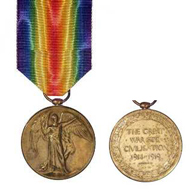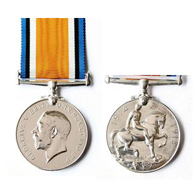ANDERSEN Johan ("John") Martin
-

- 1451
- Private
- 15 Battalion
- 47 Battalion
- Cooran
- Yes
- 13 March 1879
- Pialba, Queensland
- 14 December 1914
- HMAT A49 Seang Choon
- 13 February 1915
- Brisbane
-
Family
Johan ("John") Martin Andersen was the son of Anton Andersen and Augusta Matilde Nielsen. He was born at Pialba, Queensland, in about March 1879.
John married Sarah Louisa Wootton at Cooran on 6 November 1901. They had three children: John Martin, Sarah Matilda (Brown) (1903-) and Abraham who died at birth in 1906.
In the Queensland Electoral Rolls from 1903 to 1908, John and Sarah were recorded at either Nikenbah or Cooran. John’s occupation was “farmer” in 1903, but “labourer” subsequently.
In the Roll of 1913, John and Sarah was living at Brisbane Rd., Gympie. John was a “labourer”. Sarah died on 30 December 1913. John’s care for the children was assisted by their widowed maternal grandfather, Abraham Wootton, at Cooran.
John's brother-in-law, Thomas Wilfred Wootton, who was also in the A.I.F., died on 17 March 1916. The “Argus”, Melbourne, reported his death next day. Thomas, who was a soldier in training, was run over by a train while crossing the line at Central Station, Brisbane, and died from his injuries. On the same night, another soldier was cut to pieces and killed by a train at Ipswich.
Military context
The 15th Battalion was raised six weeks after the outbreak of the First World War. Three-quarters of the battalion were recruited as volunteers from Queensland, and the rest from Tasmania. With the 13th, 14th, and 16th Battalions it formed the 4th Brigade, commanded by Colonel John Monash.
The recruits trained in Victoria and embarked just before Christmas. After a brief stop in Albany, Western Australia, the battalion proceed to Egypt arriving there in early February 1915. The Australian 1st Division was already there. When the 4th Brigade arrived in Egypt, it became part of the New Zealand and Australian Division. The 4th Brigade landed at Anzac Cove late in the afternoon of 25 April 1915.
After evacuation from Gallipoli and return to Egypt in December, the 15th Battalion was split and provided experienced soldiers for 47th Battalion. The 47th Battalion was raised in Egypt on 24 February 1916 as part of the doubling of the AIF. About half of its recruits were Gallipoli veterans from the 15th Battalion and the other half were fresh reinforcements from Australia. Reflecting the composition of the 15th, the 47th was composed mainly of men recruited in Queensland and Tasmania. The new battalion was incorporated into the 12th Brigade of the 4th Australian Division.
Arriving in France on 9 June 1916, the 47th entered the trenches of the Western Front for the first time on 3 July. It participated in its first major battle at Pozieres. Initially, the battalion provided working parties during the 2nd Division’s attack on 4 August, and the, with its own division, defended the ground that had been captured. The 47th endured two stints in the heavily-contested trenches of Pozieres, as well as a period in reserve.
After Pozieres, the battalion spent the period up until March 1917 alternating between duty in the trenches and training and rest behind the lines. On 11 April it took part in the attack mounted against the heavily defended village of Bullecourt. Devoid of surprise, and dependent upon the support of unreliable tanks, the attack failed. Later in the year, the focus of the AIF’s operations switched to the Ypres sector in Belgium where the 47th took part in the battles of Messines and Passchendaele.
The 47th rotated in and out of the front line throughout the winter of 1917-1918. In the spring of 1918, it played a role in turning the great German Spring Offensive by defeating attacks around Dernancourt during the last days of March and the first days of April 1918.
The defeat of the German offensive had come at a cost. Due to heavy casualties and a lack of replacements from Australia, three brigades were directed to disband one of their battalions to reinforce the other three. The 12th Brigade was one of these and, on 31st May 1918, the 47th Battalion was disbanded.
Enlistment
John Martin Andersen enlisted on 14 December 1914 at Bundaberg. He declared his age as 35 years 9 months and occupation as "labourer". His height was 5 feet 9½ inches and weight 164 pounds. He was a widower with two children. His religion was Church of England and he listed his young son, John M. Andersen Jnr., as his next of kin (John Jnr.'s address was care of his grandfather Abraham Wootton at Cooran, North Coast Line). He had spent twelve months with the Wide Bay Regiment before he left the district. He requested that not less than three fifths of his service pay be allotted to the support of his children.
On 19th December 1914 at Enoggera, Private John Andersen was allocated to 3rd Reinforcements of 15th Battalion, 4th Infantry Brigade. His service number was 1451.
Private Andersen embarked on HMAT A49 “Seang Choon” at Brisbane on 13th February 1915.
Military service events included:
- 12 Apr 1915: Proceeded to join Mediterranean Expeditionary Force at Gallipoli
- 2 May 1915: Admitted to Hospital Ship A3 “Devanha” for evacuation from Gallipoli to Egypt
- 5 May 1915: Admitted to 17th General Hospital, Alexandria with venereal disease
- 24 May 1915: Discharged to duty (20 days absence with V.D.)
- 26 May 1915: Embarked again for Gallipoli
- 27 Jul 1915: Admitted to 4th Field Ambulance at Gallipoli with gastro enteritis
- 9 Aug 1915: Transferred to “Gloucester Castle” with influenza
- 10 Aug 1915: Admitted to No.1 General Hospital at Heliopolis
- 19 Aug 1915: Transferred to Helouan Convalescent Home, recovering from bronchitis
- 5 Feb 1916: Transferred to 47th Battalion
- 7 Feb 1916: Admitted to 4th Field Ambulance – chancroid -11 Feb 1916: Transferred to No.1 Australian Dermatological Hospital – severe chancre
- 7 Apr 1916: Discharged to duty (61 days absence with V.D.)
- 20 Apr 1916: Joined 47th Battalion at Serapeum
- 30 Apr 1916: Admitted to 12th Field Ambulance at Serapeum, suffering from bubo venereal disease.
- 9 May 1916: Transferred to 1st Australian General Hospital at Ismailia -23 May 1916: Discharged to Details at Tel-el-Kebir (24 days absence with V.D.). -7 Jun 1916: Embarked at Alexandria to join British Expeditionary Force in France -14 Jun 1916: Disembarked at Marseilles -19 Jul 1916: Taken on strength of 47th Battalion
- 20 Jul 1916: Guilty of absence from billet for 34 hours without leave – fined two days of pay.
- 25 Aug 1916: Drunkenness in the field – fined 21 days of pay and awarded 21 days of Field Punishment No.2
- 2 Sept 1916: Admitted to 44th Casualty Clearing Station at Puchevillers with shrapnel wounds to left cheek and back. Transferred to 32nd Stationary Hospital at Wimereux.
- 5 Sept 1916: Evacuated from Boulogne to England on “Jan Breydel” and admitted to military Hospital, Orpington next day.
- 3 Nov 1916: Transferred to 3rd Auxiliary Hospital, Dartford
- 12 Nov 1916: Discharged to Weymouth
- 24 Nov 1916: Granted leave, with orders to report back to No.4 Command Depot, Wareham on 8th December.
- 27 Jan 1917: Admitted to Isolation Hospital at Wareham with mumps
- 17 Feb 1917: Admitted to Wareham Military Hospital with scabies
- 1 Apr 1917: Discharged to No.4 Command Depot
Repatriation to Australia
Private John Andersen embarked on HT "Runic" at Devonport on 4 May 1917 to return to Australia. He was suffering from scabies and was unable to masticate his food. He disembarked on 31 January 1920 at Sydney. He proceeded overland to Brisbane.
He was discharged from the A.I.F. at Brisbane on 15 August 1917.
After the War
Johan Andersen was issued the 1914-15 Star, the British War Medal and the Victory Medal.
In December 1923, John’s only daughter, Sarah Matilda, married Robert Allan Waterston Brown.
In the Electoral Roll of 1925, John Martin Andersen was recorded at Pinbarren, Cooran. His occupation was “labourer”. Also at Pinbarren Creek in 1925, were John’s daughter Sarah Brown and her husband who were “banana growers”. Ivy Vera Adamson, who would later become John Andersen’s second wife, was living with her family at 154 Arthur St., New Farm. Her occupation was “machinist”.
Johan (“John”) Andersen married Ivy Vera Adamson in Brisbane on 21 April 1932. Ivy was 23 years younger than her husband. Despite the couple’s relatively mature age, they were to have eight children.
In the Electoral Roll of 1949, Johan and Ivy were recorded at 45 Bowler St., Paddington, Brisbane.
Johan Andersen, ex-A.I.F., aged 73 years, died on 12 May 1952 at Repatriation General Hospital, Greenslopes. The causes of death were recorded as congestive cardiac failure (weeks), pulmonary tuberculosis (years) and renal insufficiency (weeks). Johan's children who were living at the time of his death were John (50) and Sarah (49) from his first marriage, and James Edward (19), Joan Vera (17), Robert Leonard (16), Julia May (13), Jean Daphne (11), Anthony Ronald (7), and Thelma Rose (6) from his second marriage (Neil Brian had died in 1940). The informant to personal information on Johan’s death certificate was his daughter Joan, then living at 86 Racecourse Rd., Ascot. Johan’s body was cremated at Mt Thompson Crematorium on 15 May.
In the Rolls of 1958 and 1963, Ivy was recorded alone at 68 Park Parade, Shorncliffe.
In the Electoral Roll of 1963, John Martin Andersen Jnr. was recorded at Koumala. His occupation was “labourer”. Robert Brown died in 1964 at Elizabeth St., Cooran. His widow Sarah continued to reside there, at least to the Electoral Roll of 1980.
Ivy Vera Anderson, aged 65 years, died on 2 December 1967 and was buried at Lutwyche Cemetery. Her husband had pre-deceased her by 15 years.
-
- Gallipoli
- Pozieres
- Western Front
-

-

-

- Returned to Australia
- Disembarked HT "Runic"
- 12 May 1952
- Repatriation General Hospital, Greenslopes, Brisbane
- 73 years
- Cremated at Mt Thompson Crematorium, Brisbane
-
Australian War Memorial
National Australia Archives
Ancestry.com
Queensland Death Certificate 1952 / 37816
- Grant Thorne
